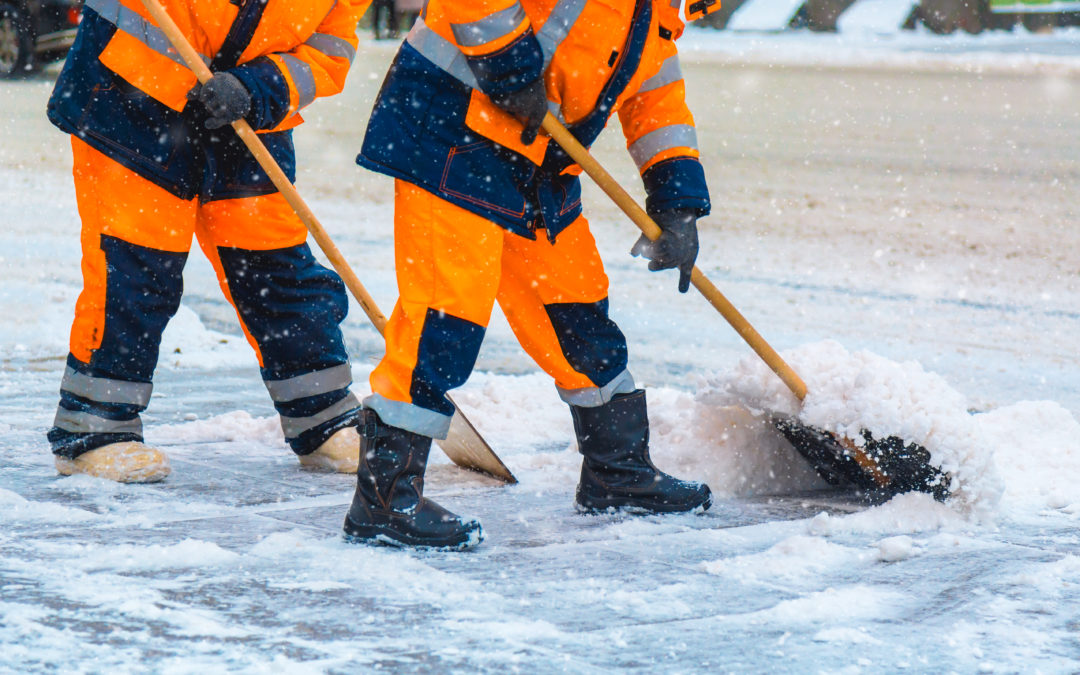With the change in temperature from summer to fall, facility management has to change right along with it to prepare for colder months. Our aim in offering maintenance tips is to help you gear up for this season so that you can avoid expensive climate-related problems in your facility.
This is the time to examine systems for potential problems that could get worse because of dry leaves, ice, rain, and other hazards. It’s also a good idea to take care of any maintenance or repairs that didn’t get done during the summer months.
One important role maintenance managers have is staying up-to-date about what needs to be winterized to prepare for colder weather. This task shouldn’t be overlooked, since failing to winterize systems can cause equipment damage and costly repairs.
Let’s get into specifics.
Inspect Heating Systems
Inspecting and maintaining your facility’s HVAC system, particularly in the fall, is vital to ensure your commercial facility can continue to function normally.
Here’s an example: If your HVAC system is faulty, this will interfere with the heating of your facility. This is problematic in cold climates and could slow down productivity and morale among employees.
Also, keep in mind that maintaining systems has the added advantage of making them last longer, with fewer repairs and problems. Why? Because you’ll be able to spot and address potential issues faster. Even seemingly small things, like built-up dirt or dust, can affect how systems work and slow them down, so maintenance is incredibly important to keep things running well.
Inspect Insulation
As you probably know, poorly insulated buildings can have a negative impact on indoor temperature, leading to inefficient heating, and, of course, higher heating costs. That’s why building maintenance is crucial. By checking for cracks, leaks, or other issues, you can save money in the long run by preventing problems before they happen.
Another area to check is the roof. With rain and the arrival of colder weather, the last thing you want is structural damage, so be sure to check insulation, even if it was checked in the spring. This will help ensure your facility is ready for fall and will remain a structurally-sound, warm environment for everyone.
If issues are detected, be sure to address them as soon as possible so they don’t get bigger. It’s also a good idea to examine window frames and doors – and any other areas where caulking or weather stripping is done – to make sure these areas are in great shape.
Check Gas Lines
Does your facility run on gas? Then it’s crucial to check your gas connections and gas lines in preparation for winter. Again, having a warm facility during the cold months is non-negotiable, so check for signs of corrosion or damage. If you address potential issues early and take steps to prevent further damage, you’ll save yourself a lot of trouble.
Clean Gutters, Pipes, and Downspouts
As with any building, debris and fallen leaves can clog up your facility’s gutters and create drainage issues. Worse, with the arrival of winter, trapped water can freeze and damage your gutters, which are expensive to replace. It’s also more difficult to get outdoor repairs done during colder months, so make sure you address any issues right away.
Check Outdoor Machinery
As colder weather approaches, don’t forget that some of your facility systems and equipment are not designed for fall and winter conditions. Always check instruction manuals to better understand what certain machines or systems might need so they don’t malfunction or need unexpected repairs.
For instance, machines that use fluids of any kind to run should be serviced in the fall, especially if they are primarily stored outside or in an unheated environment. When in doubt, be sure to call in pros who can examine your equipment and tell you what needs to be done to prepare for the cold.
Inspect and Clean Your Facility’s Exterior
As we’ve already talked about, heating efficiency in your facility is dependent on regular inspection and maintenance of the interior and exterior structures. But don’t stop at that. It’s also important to make sure the outdoor spaces, like the walls and roof, get inspected and cleaned as well.
For example, if there are dry leaves or branches near the facility that could clog gutters or create a fire hazard, you should remove them as part of fall maintenance. It’s always better to be safe than sorry, so keep any flammable materials far from buildings.
Here’s the bottom line: Being prepared for colder weather before it comes will save you a lot of time, money, and delays. If you stay organized and keep track of what needs to be done, you’ll have nothing to worry about when the temperature dips.
If It’s Time to Call in the Pros, System4 Can Help
Does the thought of completing fall maintenance checks make your head spin? Are you looking for a great service provider who can take care of it all for you? If so, you’ve come to the right place. At System4, we lead the industry in maintenance, repairs, commercial cleaning, and disinfection services. No matter what your needs are or the size of your facility, we’ve got you covered! Contact System4 today to see how our pros can help.
complimentary consultation
We believe that we can help you save money and streamline your facilities maintenance.
Contact Us
Call us
(520) 463-3902
